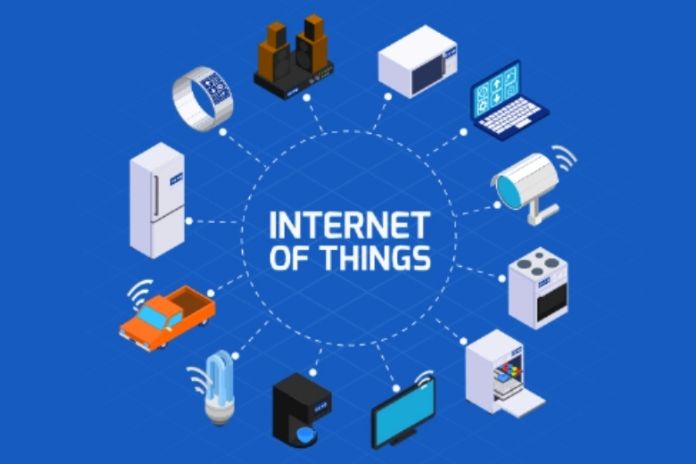IoT devices and edge computing structures will get better and more numerous, that is foreseeable. But many companies are not prepared enough to adapt quickly to change. Of course, edge computing doesn’t have to mean the same thing to all companies, so there can’t be a single recipe for everyone, just basic recommendations. This also applies to IoT connections. Therefore, every company or institution must make its thoughts what people tend to forget: data backup, i.e., backup and replication.
Merging IoT Networks And Edge Computing
Large IT companies already have solutions and practicable approaches for merging IoT and edge computing. VMware and Microsoft are just two providers of specific and easy-to-implement solutions. For example, Microsoft Azure IoT Edge and VMware Pulse IoT Center already make it possible to combine IoT and Edge Computing. Still, despite all the simplicity, it should not be forgotten to consider and adopt all plans for storage and infrastructure. Data protection and management solutions are needed to handle edge computing and cloud computing to create and manage secure backups.
Also Read- Edge AI: The Next Evolutionary Step For The Internet Of Things?
Correct Data Management In The Cloud Is Essential
IoT devices have increasingly become part of daily processes in hospitals, offices, or production environments, fundamentally changing processes. This creates a network of IoT devices that generate and process several terabytes of data every day. This massive amount of data has increased storage, bandwidth, and computing requirements and needs to be managed and secured.
What makes things more complicated: Many production systems or lines cannot be replaced entirely by IoT devices. Here, old appliances and machines work with Supervisory Control and Data Acquisition (SCADA) protocols, which have long been obsolete but are still in use because the engines must not be stopped to interrupt production. However, these outdated devices are susceptible to ransomware and other attacks and become a gateway because they were never designed to be connected to the Internet or even to a cloud.
Previously, the data from these devices was only circulating within the production island. Still, now it can be accessed via the cloud or multi-cloud environments to multiple systems and even other locations – out of the secure company perimeter and thus away from traditional security solutions. Modern data management, backup, and recovery must therefore be part of the planning for this change.
Capabilities for backup and recovery – this also applies to modern cloud environments with Secure Access Service Edge (SASE) or Zero Trust – are therefore the fundamental basis for the widespread introduction of IoT and edge computing.
An example of this necessity: Currently, a combination of IoT devices and edge computing is predominantly used in photo and video surveillance. This is mainly about sensitive information and data that need to be protected and must be both preserved and protected.
5G Acceleration
The start of the 5G radio standard requires a restructuring of all IoT concepts, as 5G accelerates communication between mobile devices or hotspots and between IoT devices and networks in terms of real-time information transfer. Therefore, it can become the drive for large and complex IoT projects such as autonomous driving, automated production, and telemedical technology.
After the complete expansion, speeds of 2 to 5 GBits can be calculated – 4G radio has achieved a maximum of 1 GBit. The latency for each device defined according to the 3rd Generation Partnership Project (3GPP) is significantly reduced. As a result, networked devices can then be used in much more critical areas than previously believed.
3GPP itself enables two types of technology that help IoT to scale: eMTC (enhanced machine-type communication) and NB-IoT (NarrowBand IoT). These technologies focus on higher device density, reduction of complexity, and better energy use. eMTC primarily refers to real-time objects, for example, so-called ‘wearables,’ such as networked wristwatches or glasses. NB-IoT is used in solutions that have higher latency and transmit a smaller amount of data. It is also possible that some of these devices could achieve a battery life of over 10 years in the future. That means a long runtime and a lot of data that has to be backed up.
A manufacturer of IoT devices with great interest in the innovations of 5G is Qualcomm. According to a roadmap the company expects 5G in connection with 3GPP functions, an improved VoLTE, a power-saving, or a higher data transmission rate. However, to achieve these goals, the backend solution must be ready for the increased amount of data. It must be taken into account that specific difficulties will arise due to the number of devices, data, and data transfer.
It is therefore conceivable that a practicable development of IoT solutions based on 5G is often only possible via the hyperscale public clouds because of a solution that uses a lot of IoT devices and is supposed to provide real-time data or maybe even rich media, the communication lines and memory of the conventional data center are exhausted very quickly. On the other hand, the hyper-scale public clouds already enable scalability to deal with such a change.
Include Data Backup In Planning
Right from the start, when the cloud environment is introduced, a solution for data backup, data recovery, and data management must be available to connect IoT devices with edge computing or 5G radio across the board. However, many plans currently do not contain any considerations in data management, although it is known that never all attacks can be prevented without harm.
Therefore, it is essential to have an emergency plan to be mainly armed against ransomware attacks and to have a means against encryption in hand. The same applies to cloud environments because the principle of shared responsibility applies: the cloud provider only has to guarantee the security of the cloud structure; The customer must protect the data stored in the cloud and the applications installed there.
Also Read: 5G As A Driver For The Internet of Things

